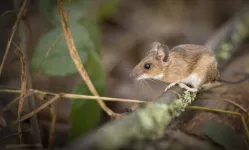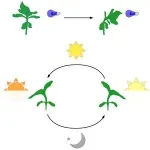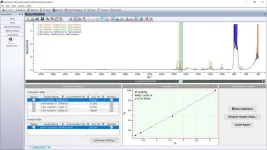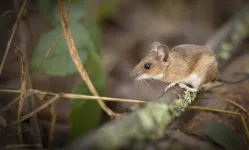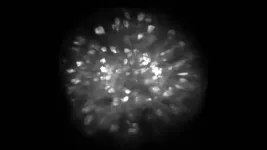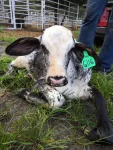(Press-News.org) When, where, and why do diseases jump from animals to people? A new project will monitor how changing seasons, land use, and human behavior influence viral outbreaks in wild rodent populations, to identify hotspots with high potential for spillover into people. The project is co-led by Barbara Han, a disease ecologist at Cary Institute of Ecosystem Studies, in an international team of scientists from the Smithsonian Institution, Royal Veterinary College, Oxford University, and the University of Glasgow.
Until now, it has been difficult to study how changing environmental conditions impact virus transmission in the wild. With $2.9 million in funding from the National Science Foundation, and an additional $1.9M in support from the UK’s Biotechnology and Biological Sciences Research Council, the new project overcomes this challenge by combining traditional disease ecology methods with the recently proven tool of metaviromics.
Unlike other genetic sequencing techniques, which are quite targeted, metaviromics will allow the team to scan for a broad array of viruses in rodents, and see how they’re changing over time and space, said Han. The study will focus on RNA-based viruses — such as coronavirus, hantavirus, and enterovirus — many of which pose an elevated risk to humans.
“This study will be an important test of the use of metaviromics for spotting the potential for new epidemics,” notes Samuel Scheiner, Program Director for the Division of Environmental Biology at the National Science Foundation. “The methods developed here potentially have very wide applicability across many pathogens.”
Viruses are most likely to jump from animals to humans when animal hosts have high viral loads and frequent contact with people, explained James Hassell, a wildlife veterinarian and epidemiologist for the Smithsonian’s National Zoo and Conservation Biology Institute’s Global Health Program. “And the chances of a virus reaching high levels or potentially infecting people depends on the season, how dense the animal populations are, and how frequently they're coming into contact with people.”
The team will explore these dynamics in wild rodents and the viruses they carry in both the UK and Eastern Uganda. The project focuses on rodents because they are responsible for more zoonotic diseases than any other mammalian order. Many rodent species live in close proximity to people and are highly responsive to environmental change.
Field work is a large component of the project; it includes trapping rodents, tagging them, and collecting fecal samples for viral RNA extraction. Radio frequency identification tags will help the researchers track the health and viral loads of individual rodents, and to estimate their movement, range, and social contacts.
To identify key drivers of virus transmission in seasonal environments, the team will track wood mice (Apodemus sylvaticus) in Wytham Woods in the UK for three years.
The Eastern Uganda site, where forests are being converted into agricultural fields, will help reveal the impact of changing land use on rodent populations and viral dynamics. Rodents will be monitored across different types of landscapes, from forests to fields and villages. The team will also estimate how frequently people are coming into contact with rodents through questionnaires, household rodent infestation measurements, and by human movement and land use activity data.
“These kinds of human-animal contact data are difficult to obtain, but could give us a powerful new perspective on pathogen transmission at a complex interface spanning different environments and seasons,” says Christina Faust of the University of Glasgow, who is leading the work in Uganda in collaboration with in-country partners.
Artificial intelligence will be used to parse how these factors and others interact to influence virus abundance and spillover risk. “Machine learning is a really powerful way to look at data from a different perspective,” Han notes, “and it reveals patterns that you might otherwise not be able to see.”
Adds Jayna Raghwani from Royal Veterinary College: “Combined with mathematical modeling, the metaviromics data get us closer to both quantifying and predicting when viruses actually emerge in the wild.”
Findings will inform disease surveillance efforts in changing environments, helping to spot emerging diseases before they turn into pandemics, and guiding strategies to reduce spillover risk.
“This project is fundamental to being able to make better, more actionable predictions about viral emergence at scales where management can actually mitigate disease emergence,” said Han.
xx
Cary Institute of Ecosystem Studies is an independent nonprofit center for environmental research. Since 1983, our scientists have been investigating the complex interactions that govern the natural world and the impacts of climate change on these systems. Our findings lead to more effective resource management, policy actions, and environmental literacy. Staff are global experts in the ecology of: cities, disease, forests, and freshwater.
END
Cary Institute to co-lead $4.8 million study on how environmental conditions shape viral outbreaks in wild rodents
Minimizing spillover into people is the focus of an international collaboration that melds fieldwork, AI, and metaviromics
2023-10-31
ELSE PRESS RELEASES FROM THIS DATE:
Wiley announces the release of KnowItAll 2024 with new multi-technique quantitation tool and additional advances for spectral analysis workflows
2023-10-31
Hoboken, NJ — October 31, 2023 — Wiley, a knowledge company and global leader in research, publishing and knowledge solutions, today announced the release of the KnowItAll 2024 Analytical Edition, the latest version of its spectral software that offers solutions to analyze, identify, quantify, and manage analytical and chemical data.
When it comes to chemical quantitative analysis, researchers often find themselves navigating multiple software packages. Mastering multiple software packages to achieve the same level of expertise, reproducibility, and ...
Cary Institute to co-lead $4.8M study on how environmental conditions shape RNA virus outbreaks in wild rodents
2023-10-31
When, where, and why do diseases jump from animals to people? A new project will monitor how changing seasons, land use, and human behavior influence viral outbreaks in wild rodent populations, to identify hotspots with high potential for spillover into people. The project is co-led by Barbara Han, a disease ecologist at Cary Institute of Ecosystem Studies, in an international team of scientists from the Smithsonian Institution, Royal Veterinary College, Oxford University, and the University of Glasgow.
Until now, it has been difficult to study how changing environmental conditions impact virus transmission in the wild. With $2.9 million in funding ...
For the sunflower, turning toward the sun requires multiple complex systems
2023-10-31
A sunflower’s ability to track the sun east to west during the day, and to face east again before the next sunrise, relies on multiple types of photoresponses, according to a new study publishing October 31st in the open access journal PLOS Biology by Stacey Harmer and colleagues at the University of California Davis, US. The results deepen the understanding of this well-known plant behavior, and upend previous assumptions about its dependence on a canonical light-dependent response pathway.
Because plants are ...
Smells like learning
2023-10-31
Order wine at a fancy restaurant, and the sommelier might describe its aroma as having notes of citrus, tropical fruit, or flowers. Yet, when you take a whiff, it might just smell like … wine. How can wine connoisseurs pick out such similar scents?
Cold Spring Harbor Laboratory (CSHL) Associate Professor Saket Navlakha and Salk Institute researcher Shyam Srinivasan may have the answer. They have found that certain neurons allow fruit flies and mice to tell apart distinct smells. The team ...
How sunflowers see the sun
2023-10-31
Sunflowers famously turn their faces to follow the sun as it crosses the sky. But how do sunflowers “see” the sun to follow it? New work from plant biologists at the University of California, Davis, published Oct. 31 in PLOS Biology, shows that they use a different, novel mechanism from that previously thought.
“This was a total surprise for us,” said Stacey Harmer, professor of plant biology at UC Davis and senior author on the paper.
Most plants show phototropism – the ability to grow toward a ...
Climate-smart cows could deliver 10-20x more milk in Global South
2023-10-31
URBANA, Ill. — A team of animal scientists from the University of Illinois Urbana-Champaign is set to deliver a potential game changer for subsistence farmers in Tanzania: cows that produce up to 20 times the milk of indigenous breeds.
The effort, published in Animal Frontiers, marries the milk-producing prowess of Holsteins and Jerseys with the heat, drought, and disease-resistance of Gyrs, an indigenous cattle breed common in tropical countries. Five generations of crosses result in cattle capable of ...
SARS-CoV-2 infection affects energy stores in the body, study shows
2023-10-31
CHAPEL HILL, N.C. – The lungs were once at the forefront of SARS-Cov-2 research, but as reports of organ failure and other serious complications poured in, scientists set out to discover how and why the respiratory virus was causing serious damage to the body's major organs, including the lungs.
An interdisciplinary COVID-19 International Research Team (COV-IRT), which includes UNC School of Medicine’s Jonathan C. Schisler, PhD, found that SARS-CoV-2 alters mitochondria on a genetic ...
Study examines financial sustainability of affordable housing-with-services models for older adults
2023-10-31
A groundbreaking study published in the journal Research in Aging sheds light on the financial challenges of housing-with-health-services models for low-income older adults. The report explores strategies for ensuring the sustainability of these beneficial efforts.
The study was conducted in partnership with Hebrew SeniorLife, a Harvard Medical School-affiliated nonprofit organization serving older adults in the Greater Boston area. It drew on insights from 31 key informational interviews and three focus groups ...
Earlier detection of cardiometabolic risk factors for kids may be possible through next generation biomarkers
2023-10-31
The next generation of cardiometabolic biomarkers should pave the way for earlier detection of risk factors for conditions such as obesity, diabetes and heart disease in children, according to a new scientific statement from the American Heart Association published in the journal Circulation.
“The rising number of children with major risk factors for cardiometabolic conditions represents a potential tsunami of preventable disease for our healthcare system,” says the statement’s lead author Michele Mietus-Snyder, M.D., ...
Wearable heart monitor ticks all the boxes for better healthcare: Study
2023-10-31
A new compact, lightweight, gel-free and waterproof electrocardiogram (ECG) sensor offers more comfort and less skin irritation, compared to similar heart monitoring devices on the market.
ECGs help manage cardiovascular disease – which affects around 4 million Australians and kills more than 100 people every day – by alerting users to seek medical care.
The team led by RMIT University in Australia has made the wearable ECG device that could be used to prevent heart attacks for people with cardiovascular disease, including in remote healthcare and ...
LAST 30 PRESS RELEASES:
Numbers in our sights affect how we perceive space
SIMJ announces global collaborative book project in commemoration of its 75th anniversary
Air pollution exposure and birth weight
Obstructive sleep apnea risk and mental health conditions among older adults
How talking slows eye movements behind the wheel
The Ceramic Society of Japan’s Oxoate Ceramics Research Association launches new international book project
Heart-brain connection: international study reveals the role of the vagus nerve in keeping the heart young
Researchers identify Rb1 as a predictive biomarker for a new therapeutic strategy in some breast cancers
Survey reveals ethical gaps slowing AI adoption in pediatric surgery
Stimulant ADHD medications work differently than thought
AI overestimates how smart people are, according to HSE economists
HSE researchers create genome-wide map of quadruplexes
Scientists boost cell "powerhouses" to burn more calories
Automatic label checking: The missing step in making reliable medical AI
Low daily alcohol intake linked to 50% heightened mouth cancer risk in India
American Meteorological Society announces Rick Spinrad as 2026 President-Elect
Biomass-based carbon capture spotlighted in newly released global climate webinar recording
Illuminating invisible nano pollutants: advanced bioimaging tracks the full journey of emerging nanoscale contaminants in living systems
How does age affect recovery from spinal cord injury?
Novel AI tool offers prognosis for patients with head and neck cancer
Fathers’ microplastic exposure tied to their children’s metabolic problems
Research validates laboratory model for studying high-grade serous ovarian cancer
SIR 2026 delivers transformative breakthroughs in minimally invasive medicine to improve patient care
Stem Cell Reports most downloaded papers of 2025 highlight the breadth and impact of stem cell research
Oxford-led study estimates NHS spends around 3% of its primary and secondary care budget on the health impacts of heat and cold in England
A researcher’s long quest leads to a smart composite breakthrough
Urban wild bees act as “microbial sensors” of city health.
New study finds where you live affects recovery after a hip fracture
Forecasting the impact of fully automated vehicle adoption on US road traffic injuries
Alcohol-related hospitalizations from 2016 to 2022
[Press-News.org] Cary Institute to co-lead $4.8 million study on how environmental conditions shape viral outbreaks in wild rodentsMinimizing spillover into people is the focus of an international collaboration that melds fieldwork, AI, and metaviromics
